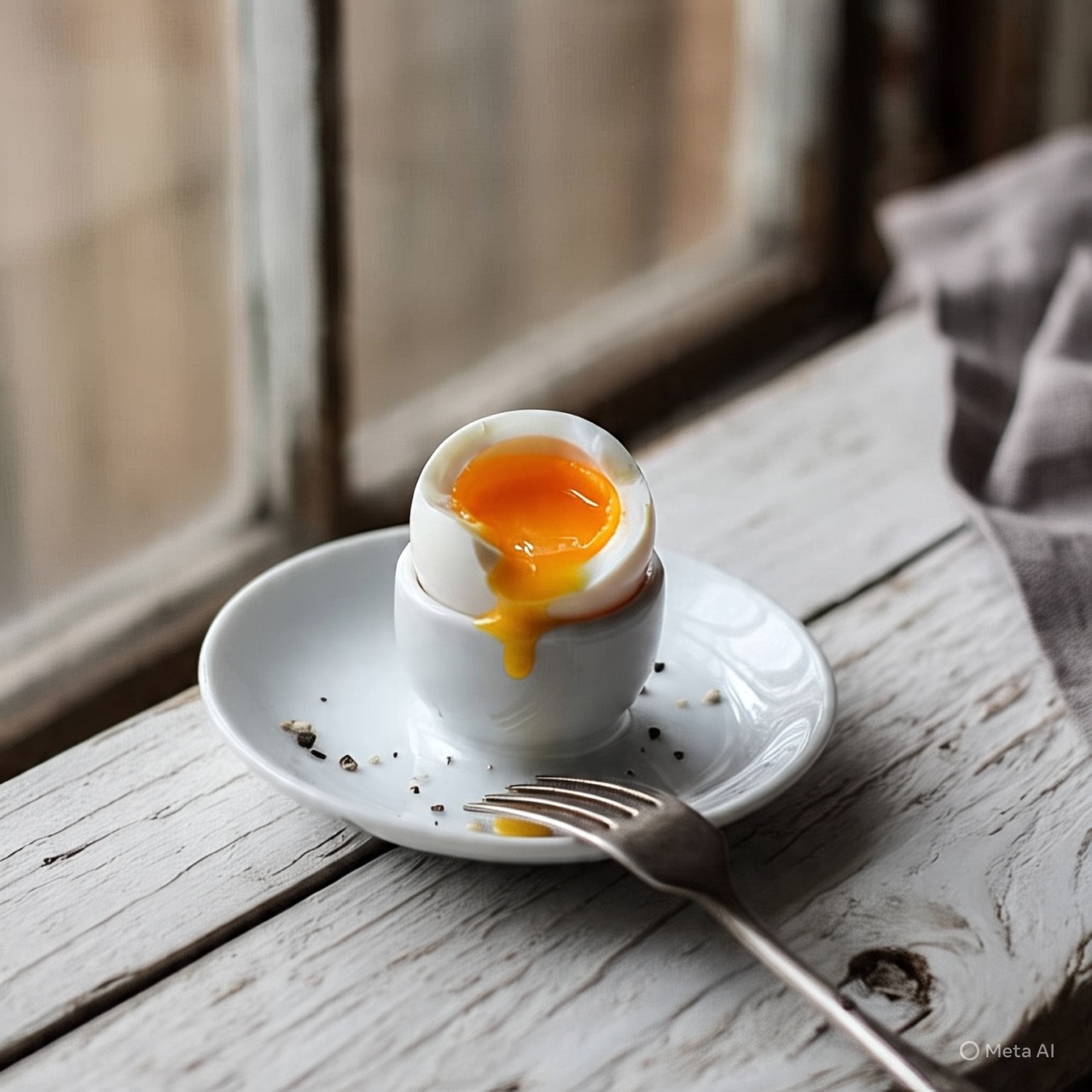Why Soft-Boiled Eggs Deserve Your Attention
The soft-boiled egg represents breakfast perfection – a study in contrasts between the firm white and luscious, runny yolk. When executed properly, it offers:
-
Velvety texture that elevates any dish
-
Quick preparation (just 4-7 minutes)
-
Versatility beyond just toast dipping
-
Nutritional benefits of gently cooked eggs
The Science of Soft-Boiling
Understanding what happens inside the egg:
Temperature Timeline:
-
140°F (60°C): Yolk begins thickening
-
158°F (70°C): White fully sets
-
176°F (80°C): Yolk firms completely
Key Factors:
-
Starting water temperature
-
Egg size and freshness
-
Altitude adjustments
Foolproof Soft-Boiled Egg Technique
Ingredients & Tools
-
Fresh large eggs (room temperature)
-
Saucepan with lid
-
Slotted spoon
-
Ice bath (optional)
-
Egg cup (traditional but not essential)
Step-by-Step Method
-
Prepare:
-
Fill saucepan with enough water to cover eggs by 1 inch
-
Bring to rolling boil over high heat
-
-
Cook:
-
Gently lower eggs into boiling water with spoon
-
Immediately set timer for your preferred doneness:
-
4 minutes: Very runny yolk, loose white
-
5 minutes: Creamy yolk, set white
-
6 minutes: Custardy yolk, firm white
-
-
-
Stop Cooking:
-
Transfer eggs to ice bath for 1 minute (for precise doneness)
-
Or run under cold tap water for 30 seconds
-
-
Serve:
-
Tap around equator with knife
-
Remove top third of shell
-
Season with salt, pepper, or preferred toppings
-
Doneness Guide
| Time | Yolk Texture | White Texture | Best Use |
|---|---|---|---|
| 4 min | Liquid gold | Just set | Ramen, dipping |
| 5 min | Creamy | Firm | Toast soldiers |
| 6 min | Custardy | Very firm | Salads, bowls |
| 7 min | Jammy | Solid | Hearty dishes |
Pro Tips for Perfection
-
Freshness matters: Older eggs peel easier but fresh taste better
-
Room temp eggs: Prevent cracking from thermal shock
-
Vinegar trick: Add 1 tbsp to water helps contain any cracks
-
Altitude adjustment: Add 15 seconds for every 1,000 ft above sea level
-
Batch cooking: Store in fridge for up to 2 days (reheat gently)
Global Soft-Boiled Egg Traditions
-
British: “Egg and soldiers” with buttered toast strips
-
Japanese: Onsen tamago (low-temp cooked)
-
French: Oeuf à la coque with crème fraîche
-
Korean: Marinated in soy mixture (mayak eggs)
-
Swiss: Basler dreikönigscier with herb butter
Creative Serving Ideas
Beyond the classic breakfast presentation:
-
Ramen topping: 6-minute egg halved lengthwise
-
Grain bowls: 5-minute egg over quinoa or rice
-
Salads: 7-minute egg with frisée and bacon
-
Avocado toast: 5-minute egg with chili flakes
-
French dip: Soft egg in croissant with ham
Nutritional Benefits
One large soft-boiled egg provides:
-
70 calories
-
6g high-quality protein
-
Vitamin D, B12, and choline
-
Lutein and zeaxanthin (eye health)
-
More bioavailable nutrients than raw
Troubleshooting Common Issues
Problem: Tough rubbery whites
Solution: Lower heat to gentle simmer after adding eggs
Problem: Green yolk ring
Solution: Reduce cooking time, cool immediately
Problem: Difficult peeling
Solution: Use slightly older eggs, peel under running water
Problem: Cracked shells
Solution: Add to water more gently, use room temp eggs
Advanced Techniques
-
Sous Vide: 145°F for 45 minutes (ultra-creamy)
-
Steamed: More consistent than boiling
-
Oven-baked: For large batches
-
Pickled: Preserve soft-boiled eggs in brine
The Perfect Egg Setup
Invest in these tools for next-level results:
-
Egg piercer (prevents flat ends)
-
Digital timer (precision matters)
-
Egg scissors (clean top removal)
-
Temperature-controlled kettle
Why This Simple Dish Matters
Mastering the soft-boiled egg teaches fundamental cooking skills:
-
Temperature control
-
Timing precision
-
Ingredient quality assessment
-
Multitasking in the kitchen
Final Thought
In our age of complicated recipes and elaborate plating, the soft-boiled egg remains a testament to the beauty of simplicity. Its perfection lies in the balance of technique and restraint – a humble ingredient transformed by careful attention into something extraordinary.
